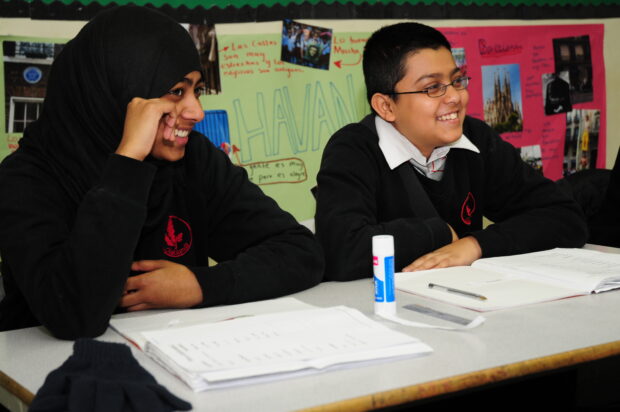
There's been a lot of talk recently in the media about algorithms. Facebook has come under scrutiny for their use of algorithms to target users with specific adverts or content. Uber and Deliveroo are using them to support their business model. Public bodies such as HMRC and the Home Office are using algorithmic analysis to look at data and make decisions. I wrote recently about how we’re using them to risk assess schools to help us decide when in the inspection cycle to inspect them.
But as I’ve said before, if making judgements about a school’s effectiveness was as easy as following a formula, we wouldn’t need to look at anything other than data. Schools are so much more than the sum of their data parts. It’s vital for inspectors to go beyond the data and look at the whole picture of the school’s performance. And that will mean different approaches, according to the key lines of enquiry developed by inspectors during inspection planning, for different schools. That’s why, during inspection we build the judgements on a number of different elements; inspection is not a one-size-fits-all process.
Differences matter
I’m often asked why inspection A was different to inspection B. Why have two schools near to each other had a different experience during their inspections? Why does one school feel that it was asked certain questions while another was asked completely different things?
Every school is different and every school leadership team is different. And so no experience of inspection is identical to any other.
HMI and Ofsted Inspectors (70% of whom work as senior leaders in schools) will put what they know about the school in context and use their professional judgement about all the different elements of the school’s situation.
Context is important (but it isn’t everything)
Inspectors think about the drivers affecting the school:
- What’s recruitment like – very challenging or less so – and what is the staff turnover?
- What do parents complain to the school about?
- What is the demographic of the local area?
- Does the demographic lead to a greater need for different support functions in the school?
- If the school is in an area where parents often pay for tutoring, is this likely to be having an impact and what value is the school adding?
Inspectors consider these things when making their judgements. That said, we must expect the same high standards of education in our schools, regardless of where they happen to be. It’s often even more important for that education to be at least good for those pupils in deprived areas.
Training and continuing professional development
Quality assurance and continuing professional development (CPD) are extremely important in our inspection work. Her Majesty's Inspectors (HMI) and Senior HMI visit a proportion of schools each term to check the quality of the inspection, sample the evidence records and to monitor inspectors’ conduct. The evidence records may be subject to further scrutiny before the report is published. On very rare occasions, it may be necessary for HMI and Senior HMI to re-visit a school. Their assessments ensure consistency of quality, not necessarily conformity of approach, and their findings are fed back to the inspectors as part of their CPD.
We ask the lead inspector on each inspection to make sure that the team adheres to our code of conduct. We also evaluate a sample of the evidence bases that the inspectors gather. We invite all schools to take part in post-inspection evaluation to keep us informed about how inspections are working.
Inspectors are trained regularly and in a variety of ways – via conferences, for instance, and using e-learning. There’s an inspector website which keeps them up to date. Inspectors are also given additional training whenever we make changes to the framework or handbook. In fact, we can’t use inspectors who aren’t up to date with this training.
We ensure the consistency and reliability of our inspection process through four things: the framework; inspector training; triangulating evidence; and lastly, our quality assurance process, including complaints.
We do this because all schools, like the people who work in them and the children who learn in them, are different from each other. They aren’t algorithms – so every school, and every inspection, will be a different experience.
Enjoying this blog? Sign up to receive an email when we publish a new blogpost.
2 comments
Comment by Sheesha Kottàry. posted on
A very comprehensive understanding of school inspections. Gives a clear understanding of what is expected.
Comment by Andre Gwilliam posted on
Engaging article.
"Quality assurance and continuing professional development (CPD) are extremely important in our inspection work. Her Majesty's Inspectors (HMI) and Senior HMI visit a proportion of schools each term to check the quality of the inspection, sample the evidence records and to monitor inspectors’ conduct."
CPD provides a thorough opportunity for institutions to enhance their credibility and skillset. It would be interesting to learn more about what CPD is on this page? Here is a link in case anyone wants to know more: https://cpduk.co.uk/explained